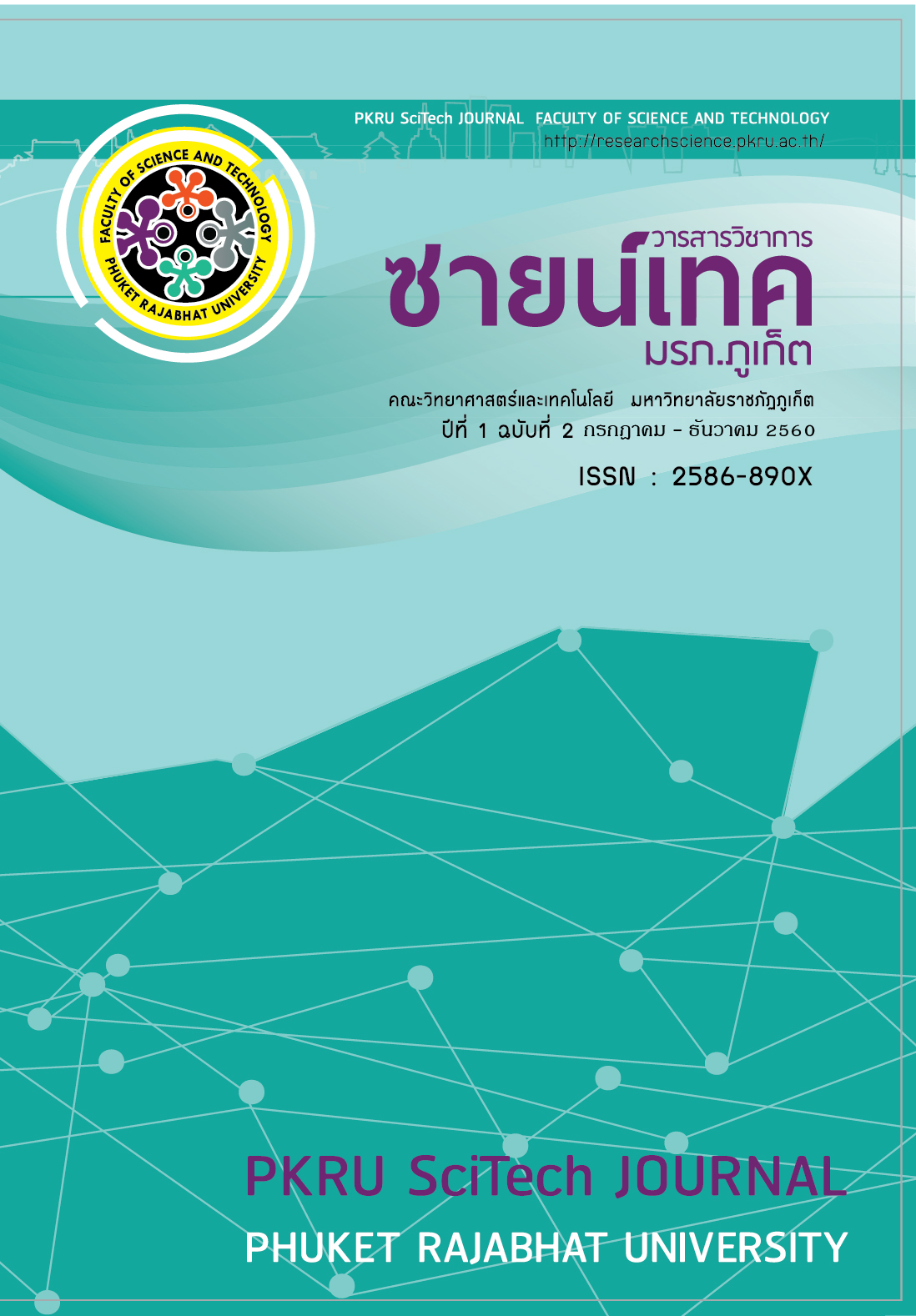อนุมูลอิสระและสารต้านอนุมูลอิสระกับสุขภาพ
Main Article Content
Abstract
อนุมูลอิสระเป็นสารที่มีอิเล็กตรอนโดดเดี่ยวภายในอะตอมหรือโมเลกุล มีความไม่คงตัวและทำปฏิกิริยาได้อย่างรวดเร็วกับสารสารชีวโมเลกลุ เช่น ลิพดิ โปรตีน และดเี อ็นเอ นำไปสู่การทำลายเนื้อเยื่อ โรคหลายชนิดเกิดจากสาเหตุของอนุมูลอิสระ เช่น การชรา โรคมะเร็ง โรคหัวใจขาดเลือด โรคความจำเสื่อม โรคภูมิแพ้ ความดันโลหิตสูง ความผิดปกติของสายตา และความผิดปกติของระบบประสาท เป็นต้น โดยปกติอนุมูลอิสระที่ถูกสร้างขึ้นถูกควบคุมโดยการที่เรียกว่า สารต้านอนุมูลอิสระ ด้วยกลไกที่หลากหลาย เช่น การดักจับอนุมูลอิสระ การจับกับโลหะที่สามารถเร่งปฏิกิริยาออกซิเดชัน การยับยั้งการทำงานของเอนไซม์ที่เกี่ยวข้องในการสร้างอนุมูลอิสระ โดยสารต้านอนุมูลอิสระทีทั้งที่เป็นเอนไซม์และไม่ใช่เอนไซม์ เช่น วิตามินซี, วิตามินอี และวิตามินเอ, บีต้า-แคโรทีน, เอนไซม์ซุปเปอร์ออกไซส์ ดิสมิวเทส, กลูตาไทโอน เพอร์ออกซิเดส, กลูตาไทโอนรีดักเทส และเอนไซม์แคแทเลส
Article Details
- The original content that appears in this journal is the responsibility of the author excluding any typographical errors.
- The copyright of manuscripts that published in PKRU SciTech Journal is owned by PKRU SciTech Journal.
References
[2] Dhawan, V. (2014). Chapter 2 Reactive Oxygen and Nitrogen Species: General Considerations, 27-47.
[3] Sarms, A. D., Mallick, A. R.., & Ghosh, A. K. (2010). Free radicals and Their Role in Different Clinical Conditions: An Overview. International Journal of Pharma Sciences and Research (IJPSR), 1(3), 185-192.
[4] Rahman, T., Hosen, I., Towhidul Islam, M. M., & Shekhar, H. U. (2012). Oxidative stress and human health. Advances in Bioscience and Biotechnology, 3, 997-1019.
[5] del Rio, L. A. (2015). ROS and RNS in plant physiology: an overview. Journal of Experimental Botany, 66(10), 2827-2837.
[6] Mut-Salud, N., Alvarez, P. J., Garrido, J. M., Carrasco, E., Aranega, A., & Rodriguez-Serrano. (2015). Antioxidant Intake and Antitumor Therapy: Toward Nutritional Recommendationsfor Optimal Results. Oxidative Medicine and Cellular Longevity, 2016, 1-19.
[7] Robert, R. A., Smith, R. A., Safe, S., & Szabo, C. (2010). Toxicological and pathophysiological roles of reactive oxygen and nitrogen species. Toxicology, 276, 85-94.
[8] Kumar, S. (2014). The Importace of Antioxidant and Their Role in Phamaceutical Science-A Review. Asian Journal of Research in Chemistry and Phamaceutical Sciences, 1(1), 27-44.
[9] Valko, M., Rhodes, C. J., Moncol, J., Izakovic, M. & Mazur, M. (2006). Free radicals, metals and antioxidants in oxidative stress-induced cancer. Chemico-Biological Interactions, 160(1), 1-40.
[10] Jebur, A. B., Mokhamer, MH., & El-Demerdash, F. M. (2016). A Review on Oxidative Stress and Role of Antioxidants in Diabetes Mellitus. Austin Endocrinology and Diabetes Case, 1(1), 01-06.
[11] Thomas, C., Mackey, M. M., Diaz, A. A., & Cox, D. P. (2009). Hydroxyl radicals is produced via the Fenton reaction in submitochrondrial particles under oxidative stress: implications for disease associated with iron accumulation. Redox Report, 14(3), 102-108.
[12] Noori, S. (2012). An Overview of Oxidative Stress and Antioxidant Defensive System. Open Access Scientific Reports, 1(8) 2-9.

